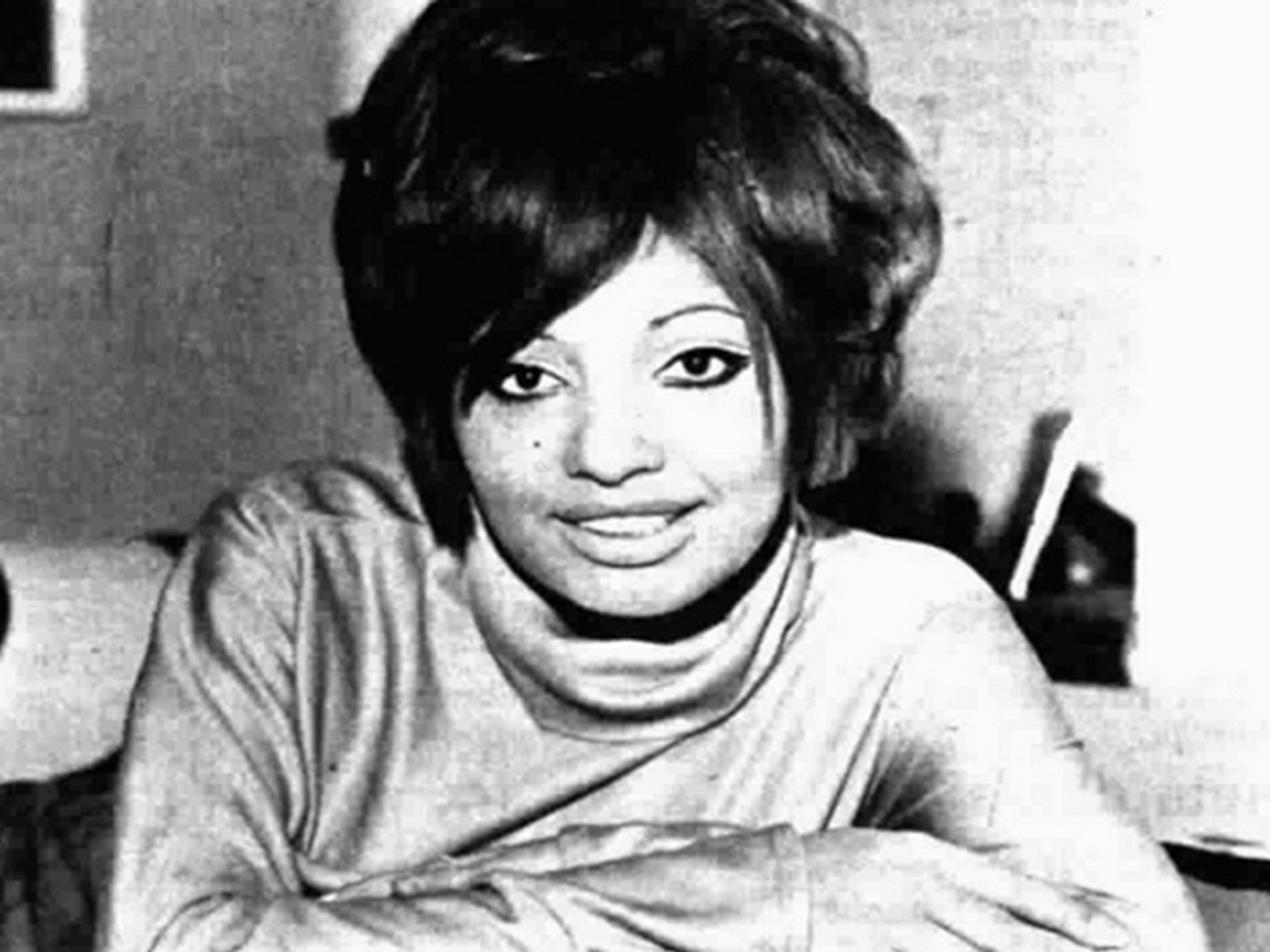Saint Paul was born Silvana Areggasc Savorelli in Asmara, the capital of Eritrea, to an Italian father and an Eritrean mother. From 1967 she assumed the name Lara Saint Paul.
The country was an Italian colony before being occupied by the British during the Second World War. From 1949 it became a UN trust territory administered by the UK. In 1951 the UN voted to make Eritrea a federal part of Ethiopia. Ethiopia later annexed the country, which finally got independence in 1993.
Like the majority of the Italian community – which numbered 76,000 at the peak of colonization in 1939 – her family left Eritrea after the collapse of fascism. The Savorellis moved to Fusignano in the Italian province of Ravenna, where Saint Paul grew up.
A beauty, with an inviting smile and kohl-lined eyes, Saint Paul’s first public performance was in 1962 at the Sanremo Music Festival competition in the Italian province of Imperia. At that time she went by the name Tanya and performed the ballad “I colori della felicità” (The colours of happiness).
In 1968 she was signed to Italian record label Company Discografica Italiana (CDI) by its founder, a former journalist from Tuscany, Pier Quinto Cariaggi, who she married the following year.
Also in 1968, Cariaggi brought trumpeting legend Louis Armstrong to Italy as a guest star at the Sanremo Festival. Saint Paul returned to Sanremo to sing a duet of “Mi Va Di Cantare” (I’m Going To Sing) with Armstrong who reportedly said she had one of the most beautiful voices he’d ever heard.
The same year she made her debut on television in the variety show Quelli della domenica (Those ones on Sunday) broadcast on Italy’s Primocanale. In 1969 she worked with actor and comedian Raffaele Pisu on another TV variety show La domenica è un’altra cosa (Sunday is another thing), and in 1971, she featured in the music show Canzonissima performing the song ”Strano“ (Strange).
 Saint Paul in 1970 (Wikicommons)
Saint Paul in 1970 (Wikicommons)In 1972, she returned to the Sanremo Festival with the song “Se non fosse tra queste mie braccia lo inventerei” (If it were not in my arms I would invent it), reaching the final, and was back again in 1973 to perform ”Une casa grande” (A big house). Also in 1973 she released “Mi fa morir cantando,” an Italian-language version of the timeless track “Killing Me Softly With His Song,” which had been a No 1 hit for American singer Roberta Flack the same year.
Saint Paul’s extraordinary popularity took her to international pastures with tours across Europe and the United States. In 1974 she released a song arranged by legendary record producer Quincy Jones and in 1977 the album Saffo Music recorded in Los Angeles and produced by Leon Ware, who also produced Marvin Gaye’s sensational “I Want You.” She sang concerts in Los Angeles, where she worked with Ray Charles and Stevie Wonder among others, and she became friends with Frank Sinatra.
As well as her musical accolades, she also experimented with new fashions from abroad. In 1978 she posed for Playboy magazine, and in the 1980s she became a champion of aerobic dance videos, becoming one of the first to import them to Italy. In 1981 she released the album Bravo, the first in a series of albums devoted to her new gymnastic passion. She then released the album Aerobic Dance, which won the Golden Disc and an award at the Tokyo International Festival.
Under the name Lara Cariaggi, in 1995, she wrote and, with her husband, produced The Best is Yet to Come, a television documentary about their friend opera singer Luciano Pavarotti. Saint Paul conducted the film’s interviews. Her husband died the same year in Milan after suffering a stroke.
In recent years Saint Paul has hit harder times – affected by poverty, diseases and other challenging circumstances. In 2011 she sued pharmaceutical manufacturer Bayer, claiming to have suffered to the extent of “a state of inability” from using Bayer’s Lasonil, a heparinoid ointment closely related to warfarin.
Her critical financial situation meant that in 2012 she was evicted from the residence she occupied. On 14 April 2013, she appeared on a long-running Italian Sunday television show and recounted the difficult economic and family conditions in which she was living. On 1 December 2014, upon recommendation of the presidency, the Italian parliament endowed her the extraordinary allowance laid out in the Bacchelli Law of 1985, which grants a lifetime subsidy to famous Italians who are distinguished for their activities in the field of arts, sciences or sport.
In January 2017 Saint Paul was diagnosed with small intestine cancer (adenocarcinoma). Unable to support herself even with her government subsidy for destitute artists, a request for help was launched by her daughter Manuela: “We need financial help and medical advice,” she explained to the public on Italian news channel TGCOM24. “She was operated upon and her intestine was perforated during a colonoscopy. They would like to reopen it, but she is afraid. She does not feel good about it and would like to change hospital.” A website was set up for anyone wishing to get in touch with Saint Paul to help or even just to offer a message of comfort.
Saint Paul died at the Casalecchio di Reno hospice in the Italian province of Bologna at the age of 73. She is survived by her two daughters and two grandchildren.
Lara Saint Paul, Eritrean-Italian singer, born 30 April 1945, died 8 May 2018